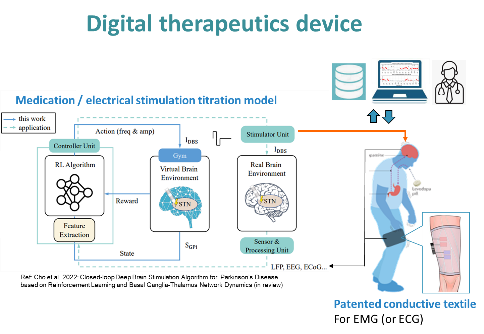Introduction
Parkinson's disease is a common neurodegenerative disease, and 1-2 in every 1,000 elderly people will suffer from Parkinson's disease. The treatment of Parkinson's disease is mainly based on drugs in the early stage, and requires long-term follow-up and adjustment of drug prescriptions. However, it is difficult to trace back the status of home-based medications spoken by patients or caregivers. Although there are many wearable motion signals that can be recorded for a long time, but the translation between clinical phenotype from the doctors and these motion signals has become an unsatisfied clinical pain point. This product intends to use the long-term motion information records of wearing sensing devices, and use the blood levodopa concentration as a standard for medication ON and OFF instead of the UPDRS scores that were usually used in the literature references. Currently, we succeed to cluster the motion signals by medication ON and OFF. Next, we will implement the algorithm in the user interface of the home-use wearable sensors and verify the device in the clinical use environment.
Features / strengths
Features
1. Textile-based sensing fibers
2. Integrated miniature wearable module
3. Close-loop smart treatment model
4. High performance computing biomedical chip
Specifications
1. Textile-based sensing fibers integrated with miniature wearable module for stretchable human factor consideration and long-term adhesion.
2. Close-loop smart treatment model for medication and deep brain stimulation parameter titration.
Applications
.Long-term chronic disease monitoring, medication management and telemedicine.
Specification in detail
Material
textile-based sensing fibers
Function
Integrated miniature wearable module, Close-loop smart treatment model, High performance computing biomedical chip


